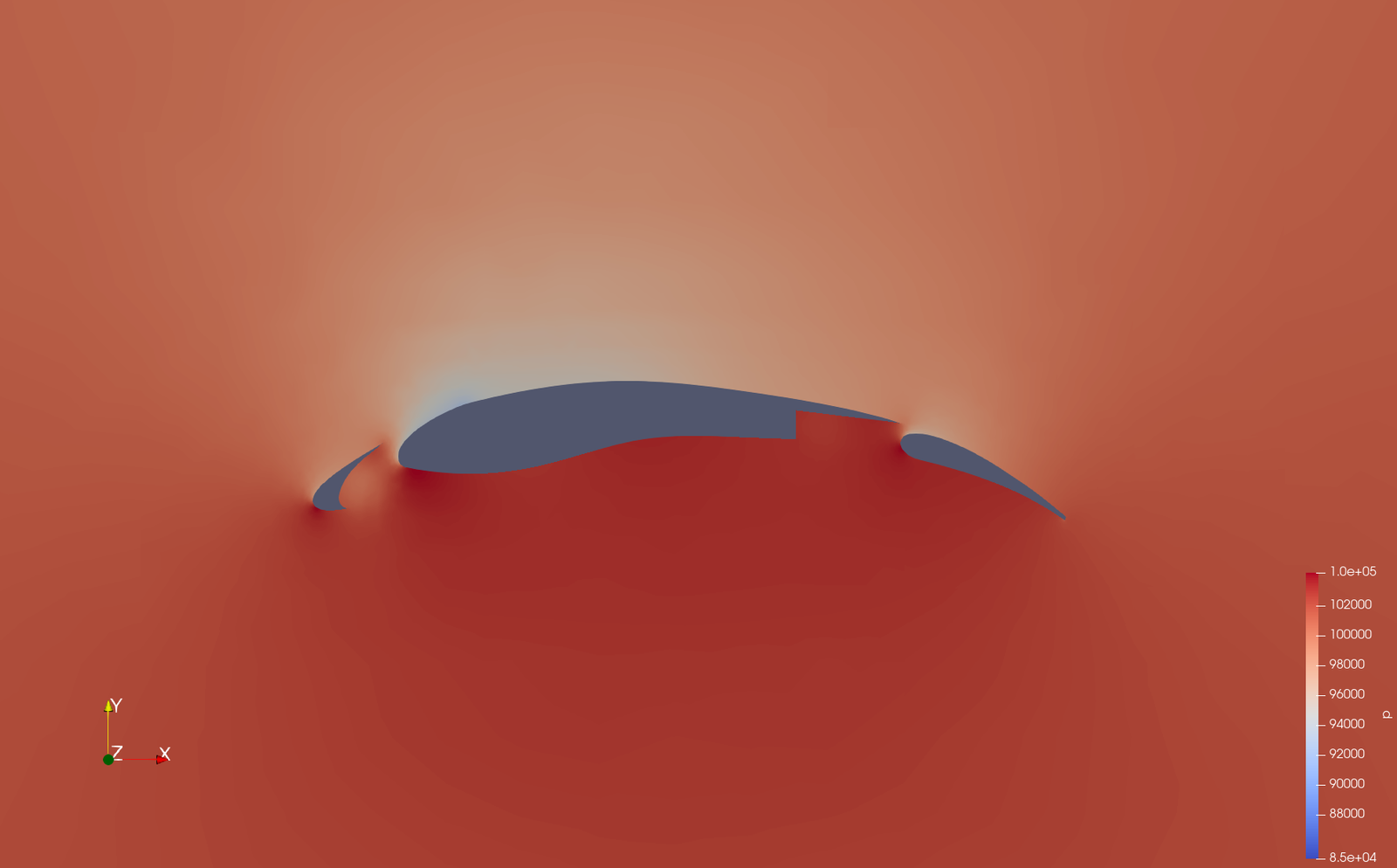
Aerodynamic Optimization of a Multi-element airfoil
An adjoint-based Navier-Stokes design method is used for optimization, which is considered to be more efficient. This method, used with the OpenFOAM solver rhoSimpleFoam and the Reynolds-Averaged Navier-Stokes equations, provides aerodynamic gradient information with significant processing savings. The IPOPT method is used to optimize clmax and L/D. The design method uses a point-to-point matched multi-block grid system and the Message Passing Interface standard for communication in calculations. Design variables include airfoil shape, element placements, and angle of attack.
A single element airfoil namely the NACA0012 airfoil is also run through the algorithm to optimize it for high Cl(max) and L/D, this is done to validate the algorithm. This video below illustrates the stages the airfoil goes through.
The ADHF is a high-lift device that combines a downward deflection spoiler with a hinge flap for improved aerodynamics. The shape of the ADHF airfoil is optimized using the MD-30P30N multi-element airfoil. Here the Adaptive Dropped Hinge Flap (ADHF) is optimized for a higher L/D during cruise condition.
Your content goes here. Edit or remove this text inline or in the module Content settings. You can also style every aspect of this content in the module Design settings and even apply custom CSS to this text in the module Advanced settings.
